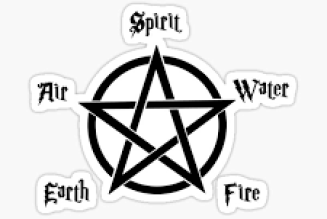Solitary pagan witches celebrate the solstices as an important part of their spiritual practice. These witches follow a path that is individualistic and self-directed, and they often find solace and connection with nature in their celebrations. The solstices, which occur twice a year, mark the longest and shortest days of the year and are significant events in the pagan calendar.
For solitary witches, the solstices are an opportunity to honour the changing seasons and the cycles of life. They may celebrate with rituals, spells, or simply by spending time in nature. The summer solstice, also known as Litha, is a time of abundance and growth, while the winter solstice, or Yule, is a time of reflection and renewal. Through their celebrations, solitary pagan witches connect with the natural world and find meaning in the cycles of life and death.
What are Solitary Pagan Witches?
Solitary Pagan Witches are practitioners of Paganism who choose to practice their craft alone, rather than within a coven or group. They typically follow a nature-based spirituality and honour the cycles of the Earth, including the solstices, equinoxes and other seasonal changes.
Solitary Pagan Witches often create their own rituals and practices, drawing on a variety of sources including traditional Pagan beliefs, folklore, and personal experiences. They may also incorporate elements of other spiritual or religious traditions into their practice, such as meditation, yoga or shamanic techniques.
One of the key advantages of being a Solitary Pagan Witch is the freedom to create a practice that is tailored to their individual needs and beliefs. They are not bound by the rules or traditions of a coven, and can explore their spirituality in a way that feels authentic and meaningful to them.
However, being a Solitary Pagan Witch can also be challenging. Without the support and guidance of a coven, it can be difficult to learn new skills or deepen their understanding of the craft. Solitary practitioners must rely on their own intuition and research to develop their practice, which can be time-consuming and sometimes overwhelming.
Despite these challenges, many Solitary Pagan Witches find great joy and fulfillment in their practice. They enjoy the freedom to explore their spirituality in their own way, and the opportunity to connect with the natural world and the cycles of the Earth.
The Importance of Solstices in Paganism
Solstices are important events in the pagan calendar, marking the longest and shortest days of the year. They are times of celebration, reflection and renewal, and are observed by solitary witches as well as covens.
The solstices are significant because they represent the balance between light and dark, and the cycles of nature. Pagans see the solstices as a time to connect with the natural world and honour the changing seasons.
At the summer solstice, also known as Litha, the sun is at its highest point in the sky. This is a time of abundance and growth, when the earth is in full bloom. Pagans celebrate by lighting bonfires, dancing, and making offerings to the gods and goddesses of the sun and nature.
The winter solstice, or Yule, is the longest night of the year. It marks the return of the sun and the promise of new beginnings. Pagans celebrate by lighting candles, decorating trees, and exchanging gifts. They also honour the goddess of the moon and the god of the sun, who bring light and warmth to the world.
In conclusion, the solstices are an important part of pagan practice, representing the cycles of nature and the balance between light and dark. They are times of celebration, reflection and renewal, and are observed by solitary witches and covens alike.








